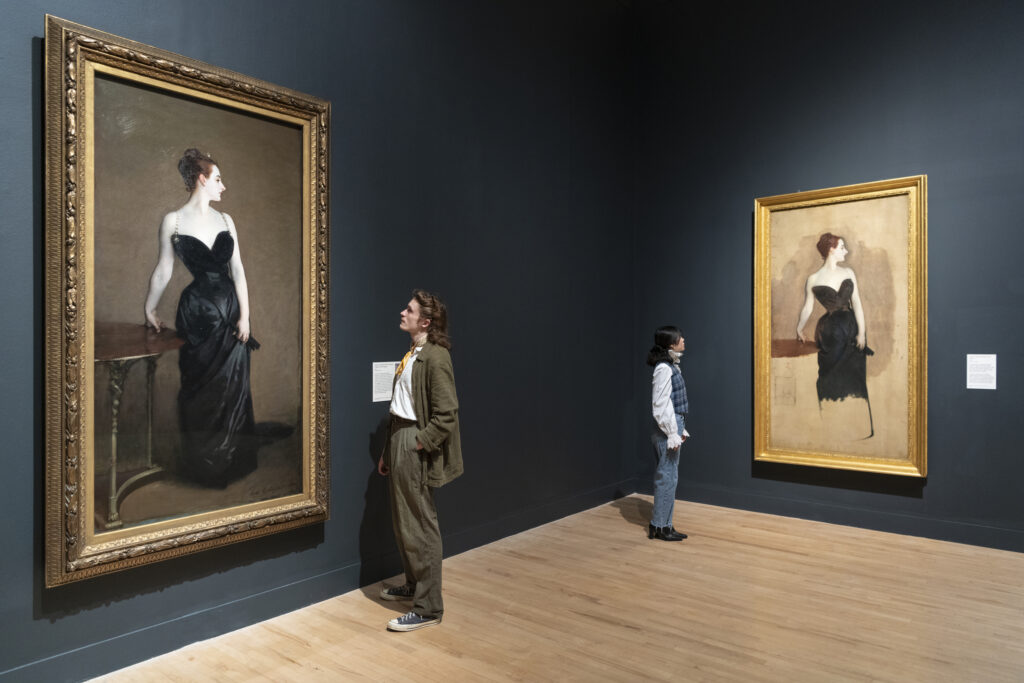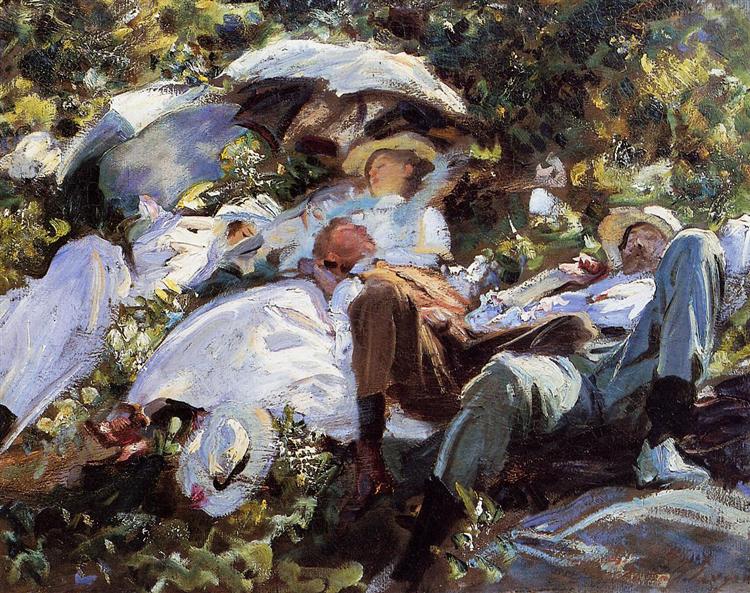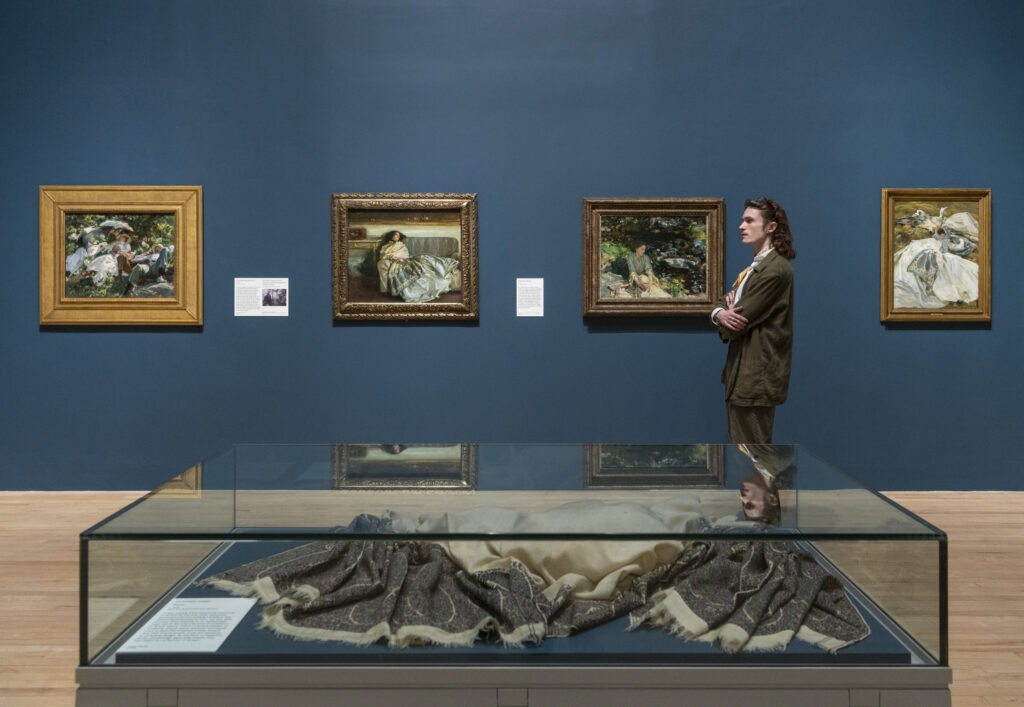The Art of Science—Versailles at the Science Museum, London
Have you ever wondered how it would feel to witness the grandeur and opulence of the 18th-century French court? Then you might want to go to London.
Edoardo Cesarino 19 December 2024
Split into nine sections, Tate Britain’s exhibition Sargent and Fashion (22 February – 7 July 2024) takes the audience on an exquisite journey through John Singer Sargent’s (1856-1925) oeuvre, remarkably highlighting the profound influence that fashion had on his paintings.
Through harnessing the emergence of haute couture and its social significance, the exhibition reveals how Sargent utilized the color, light, texture, form, and pattern that clothing provided to reflect the sitters’ personalities, challenge social conventions, and document the splendor of Victorian and Edwardian luxury. Sargent’s carefully considered use and placement of clothing underscores his compelling portraiture with narrative and intention, interpreted as the “modern in dialogue with tradition.”
Viewing Sargent through these lenses provides a unique understanding of his journey as an artist, brilliantly captured by the Tate’s illuminating exhibition.
The exhibition demonstrates how Sargent meticulously used fashion to express the sitters’ personalities, styling them himself to position the fabric to catch both the light and the viewer’s attention. The wife of a watercolor painter and an important patron of Sargent, Mary Louisa Cushing Boit, sits in a pale pink and black polka dot dress with matching feathery headwear. The actual headpiece appears next to the painting, a curatorial decision that draws the viewer closer to the real lives of the subjects. The silk fabric contrasts with the velvet cushion and gleaming gold chair, causing your eye to dance across the composition. With a subtlety cheerful expression and her hands casually clasped, Sargent employs the style of traditional portraiture, yet with unique attention given to reflecting Mary’s non-visual qualities. Pattern, fabric, and color contrast portray her vivacious and light-hearted nature. Writer Henry James observed, “She is wonderful and of a living! But she not only speaks—she winks—and the philistine will find her vulgar.”
In contrast to Mary’s jovial personality, Jane Evans is portrayed with a masculine severity. Her jacket broadens her shoulders, and the dark palette and sturdy pose capture the sitter’s serious composure and authoritative disposition. Yet, softness is not lost, and Jane’s illuminated face glows with hint of kindness and wisdom, the white mirrored in her hair and the chair she sits on.
Departing from his penchant for the color black, Sargent’s portrait of the high-society socialite Lady Agnew of Lochnaw is light, whimsical, and delicate. This is emphasized by the sheer lilac fabric of her exquisite dress, the gentle brushwork, and the floral chair. This is, however, contrasted with her daring and confident expression, which together capture the essence of her feminine charm.

Sargent and Fashion installation view with Madame X, 1883-84 and Study of Mme Gautreau, c.1884 at Tate Britain, 2024. Photo © Tate (Larina Fernandes).
Whilst known for occasionally painting sitters in unconventional poses and daring attire, notably with the infamously statuesque Madame X (1883-4), the exhibition further illustrates how Sargent observed social challenges towards Victorian propriety. As a friend of Oscar Wilde and the aesthetes of London’s artistic culture, Sargent often painted people in a manner not typical of traditional masculine and feminine ideals.
Between the rooms dedicated to portraits of women in glorious gowns and hyper-masculine men in regalia and military adornments, the exhibition devotes a room to Sargent’s late-19th-century depictions of dandyism, owing to the developing culture of androgyny and non-conforming expressions of gender and sexuality amongst certain artistic and literary circles. Notably featured is Vernon Lee, aka Violet Paget, an androgynous female writer who used a male pseudonym. Sargent’s portrait of Vernon Lee emphasizes her boyish appearance, adorned with round spectacles, a popped collar, and a short haircut.
His other works, such as the pictured W. Graham Robertson (1894), Dr. Pozzi at Home (1881), and (rumored to be Sargent’s lover) Albert de Belleroche (1883), depict men with soft elegance in leisurely poses, emphasizing the elongated verticality of their necks and fingers with the fur-collared overcoats and bold nightgowns that they wear. Appealing to the dandy aesthetic of the refined and fashionable intellectual class, such styles were often mocked in the media for being feminine in their persuasions.
Sargent often showcased garments from the Parisian designer brand, House of Worth, in his paintings. Alongside the development of lavish haute couture was the designing of extravagant costumes. Adding bold splashes of color to Sargent’s oeuvre, the exhibition dedicates a room to his paintings infused with not only inspiration from the stage, mythologies, and folklore, but also from the cultural attire of dancers and performers from countries in North Africa and Asia. In a radical departure from his typical style, A Javanese Dancing Girl (1889) is an unexpected feature of the exhibition, demonstrating Sargent’s experiments with inspired color palettes and styles.

John Singer Sargent, Group with Parasols, c.1905, private collection.
Moving away from commissioned portraits, Sargent’s later works feature figures dissolving into backgrounds of luscious greenery and scenes of serenity. Leaning further into Impressionist techniques, his paintings become busier; the paint is applied with broader brush strokes and blurs of color and line dominate every inch of the canvas. Nevertheless, his exquisite treatment of fashion remains in his studies of the texture and light of clothing, guiding his compositions.

Sargent and Fashion installation view at Tate Britain, 2024. Photo © Tate (Larina Fernandes).
Sargent and Fashion is a stunning exhibition, showcasing the many different aspects of Sargent’s practice, masterfully pieced together through the lens of fashion. It expresses Sargent’s incredible ability to creatively direct portraiture, his technical use of contrasting loose and refined brushwork to highlight features, and his subtle experimentation that adds depth and intrigue to his works.
Digital reproductions of his paintings pale in comparison to the real thing, so I recommend making your way to Tate Britain to see this dazzling and magnetic overview of Sargent for yourself!
Sargent and Fashion is on view in Tate Britain in London, UK, until 7 July 2024.
DailyArt Magazine needs your support. Every contribution, however big or small, is very valuable for our future. Thanks to it, we will be able to sustain and grow the Magazine. Thank you for your help!